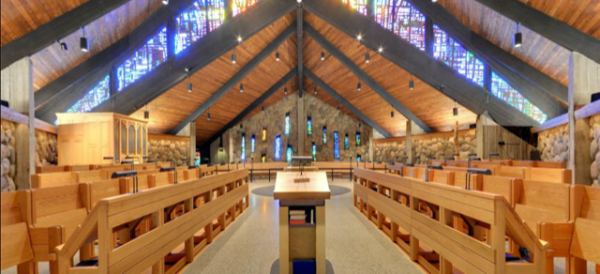In 1974, a decade before joining the L’Arche community in Toronto, Henri Nouwen made a seven-month retreat at a Trappist monastery called The Genesee. He subsequently published his diary for that period, which ended on Christmas Day. Here is his final entry, dated Wednesday, December 25:
How shall I describe this Holy Night? How shall I give expression to the multitude of feelings and ideas that come together in this most joyful celebration? This night is the fulfillment of four weeks of expectation; it is the remembrance of the most intimate mystery of life, the birth of God in an agonizing world; it is the planting of the seeds of compassion, freedom and peace in a harsh, unfree, and hateful society; it is hope in a new earth to come. It is all that and much, much more. For me it is also the end of a most blessed and graceful retreat and the beginning of a new life. A step out of silence into the many sounds of the world, out of the cloister into the unkept garden without hedges or boundaries. In many ways I feel as though I have received a small, vulnerable child in my arms and have been asked to carry him with me out of the intimacy of the monastery into a world waiting for light to come.
This day is the day in which I will experience not only the beauty of the night with songs of peace but also the wide ocean stretching out between two continents. This day the smallness and vulnerability of the child and the vastness of our earth will both enter my soul. I know that without the child, I have no reason to live but also that without a growing awareness of the suffering of humanity, I will not fulfill the call that the child has given me.
The monks smile and embrace me, the night is soft and quiet, the gentle sounds of the bells during the midnight Gloria still echo in my soul. All is still and quiet now. The branches of the trees outside are decorated with fresh white snow and the winds have withdrawn to let us enjoy for a moment the unbelievable beauty of the night of peace, the Holy Night.
What can I say on a night like this? It is all very small and very large, very close and very distant, very tangible and very elusive. I keep thinking about the Christmas scene that Anthony arranged under the altar. This probably is the most meaningful “crèche” I have ever seen. Three small wood-carved figures made in India: a poor woman, a poor man, and a small child between them. The carving is simple, nearly primitive. No eyes, no ears, no mouths, just the contours of the faces. The figures are smaller than a human hand—nearly too small to attract attention at all. But then—a beam of light shines on the three figures and projects large shadows on the wall of the sanctuary. That says it all. The light thrown on the smallness of Mary, Joseph, and the Child projects them as large, hopeful shadows against the walls of our life and our world. While looking at the intimate scene we already see the first outlines of the majesty and glory they represent. While witnessing the most human of human events, I see the majesty of God appearing on the horizon of my existence. While being moved by the gentleness of these three people, I am already awed by the immense greatness of God’s love appearing in my world. Without the radiant beam of light shining into the darkness there is little to be seen. I might just pass by these three simple people and continue to walk in darkness. But everything changes with the light.
During these seven months the light has made me see not only the three small figures but also their huge shadows far away. This light makes all things new and reveals the greatness hidden in the small event of this Holy Night. I pray that I will have the strength to keep the light alive in my heart so that I can see and point to the promising shadows appearing on the walls of our world.
Now the only thing I can say on this Christmas morning, at the end of the event that started on Pentecost, is, “Thanks be to God that I have been here.”
~from Henri J.M. Nouwen, The Genesee Diary: Report from a Trappist Monastery, Image Books, New York, 1981, pp 214-16.
Next Post: “The Broken Baby” (my annual Christmas story)

